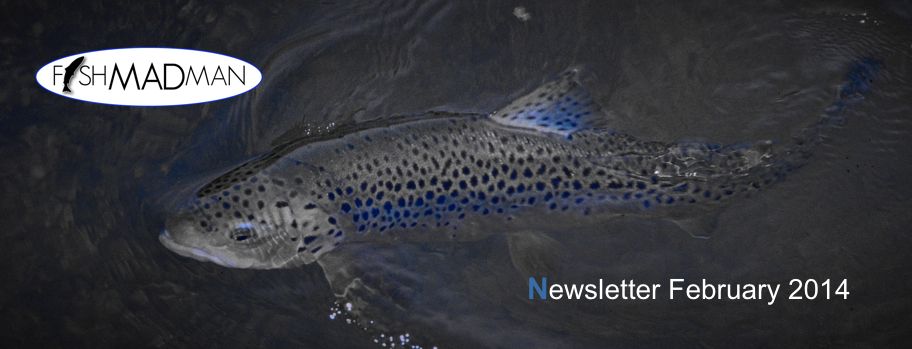
Get more sea-trout on the bank – Using a sea-trout tube fly !
Sea trout fishing in estuaries and on the open coast is the big thing in Denmark and many Danish fly fishermen strive to perfect the flies for this fantastic sport. Most coastal sea-trout flies are similar to those used for still-water fishing in the UK, and anglers need to retrieve the flies to create a sense of life – The take from the sea-trout is often in direct line with the rod and leader and angler need to strike the fish quickly to secure a hook-up.
A conventional fly is not always the best solution and many anglers will lose fish to the fact that the mouth of a trout is a hard and bony place where a normal hook will have a tough time find a secure hold.
Read below about an ingenuous sea-trout tube fly solution that will give you more fish on the bank
trout fishing techniques
Recent surveys in the Danish fishing magazine Fisk & Fri has shown, that only 45 % of all sea-trout contacts on the coast are landed with traditional hook flies in the # 8-2 range. But – by shifting to tube flies with small trebles in the# 12-18 range mounted asymmetrically you could make a landing rate of over 90%. You could roughly double your average catch.
We at Fishmadman have made a new series of tube flies specially designed to this type of fishing.
Buy box with 10 selected tube flies for coastal sea-trout fishing
Flies from the NEW sea-trout tube fly series : Proven killers for coastal sea-trout fishing tied on our hard 1.4-millimetre tube – The sea-trout tube fly can be rigged conventionally or with the L-RIG system described below
Together with some of the best fly designers and pro-tiers we work with we sat down to compile a collection of most wanted coastal sea trout pattern. Famous Scandinavian sea trout pattern like; Grå Frede, Flammen, Rør Tobis, Slagter Fluen, Arizona Shrimp, Nat-Zonker, Zonker Kutling, Snydefluen, Børsten, Polar Magnus was re-modelled into tube flies – weighted and shaped into perfection These are the first commercial coastal tubes flies on the market but they already account for hundreds of fish caught as we and our team has fished with them during the last couple of seasons.
The unique sea-trout tube fly design will give anglers a fly that perform perfect in still-water and enable the use of different hooks that fit your style of fishing – These flies are specifically designed to be used with the creative L-RIG system devised by Mr. Jens Bursell – But the sea-trout tube fly will also work as your normal tube fly: with a hook fixed at the rear of the fly – For that purpose we have also supplied the box-selection of flies with a length of our high-grade hook-guard – Cut it into a desirable size and fix it to the rear of the sea-trout tube fly (This hook guard can also be used for fixing the L-rig on long-winged flies) – see below. A small selection of Owners famous ST-36BC in # 14 – 16 and a thorough HOW-TO make the L-RIG concludes this coastal tube fly kit
Buy box with sea-trout tube fly 
Asymmetrically mounting of the treble as seen on this L-RIG, helps the hook find a secure hold in the mouth of the sea-trout. The majority of fish you want to release on the coast is small fish – and when hooking these with the L-RIG, you have a much higher frequency of fish hooked in the outer parts of the mouth compared to flies tied on a conventional hook – and many of these fish will only be pricked in the thin outer skin of the mouth, where they are very easy to unhook with minimal damage to the fish.
The L-RIG on Sea-trout tube fly
The highest landing rate on the small trebles for coastal sea-trout fishing is achieved by mounting the treble asymmetrically loosely dangling in a blood loop – The L-RIG was originally designed by Danish top-angler Jens Bursell.
- The beauty of this asymmetric hook mounting is, that it makes it possible to use smaller and better penetrating hooks on a sea-trout tube fly with higher efficiency:
- The hook points are better exposed leading to a higher chance of connecting with the fish when it grabs the fly
- The hook gape is better exposed leading to a more solid hook grip.
- Using a mounting system, that makes it possible to use smaller hooks with correspondingly smaller barbs, also means, that you shorten the time of de-hooking and make less tissue damage on the fish –
Read more on this last issue in the article How much damage does your hooks make
The L-RIG knot explained in pictures
Here a tube fly set up with an L-RIG – When using a long-wing fly like this Nat Zonker from our coastal seatrout tube-fly series it’s recommended to mount the L-rig in a hook guard to minimize tangle from the loose dangling hook. See how to do this specific variant of the rig here
Read more about how to tie the L-RIG – and work with knots – on bursell.dk
 How to use the sea-trout tube fly
How to use the sea-trout tube fly
In the new book on coastal sea-trout fishing by Jens Bursell and Rasmus Ovesen you can read more about practical fishing with coastal tube flies and how to tie the L-rig .
This book is published in Danish, German and Swedish: The titles are:
Havørred – Refleksioner på kysten –
Meerforellen: Küstenangeln mit Profi-Taktiken Den stora boken om havsöring

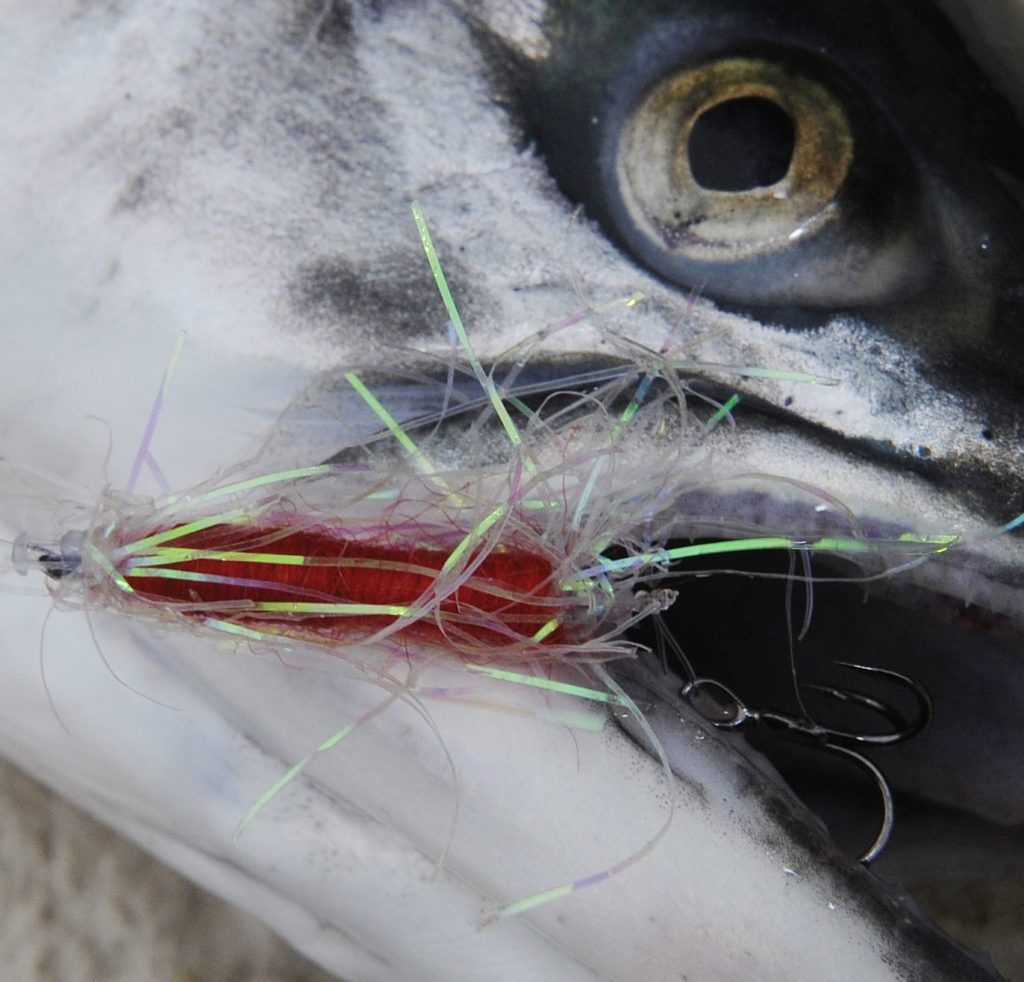
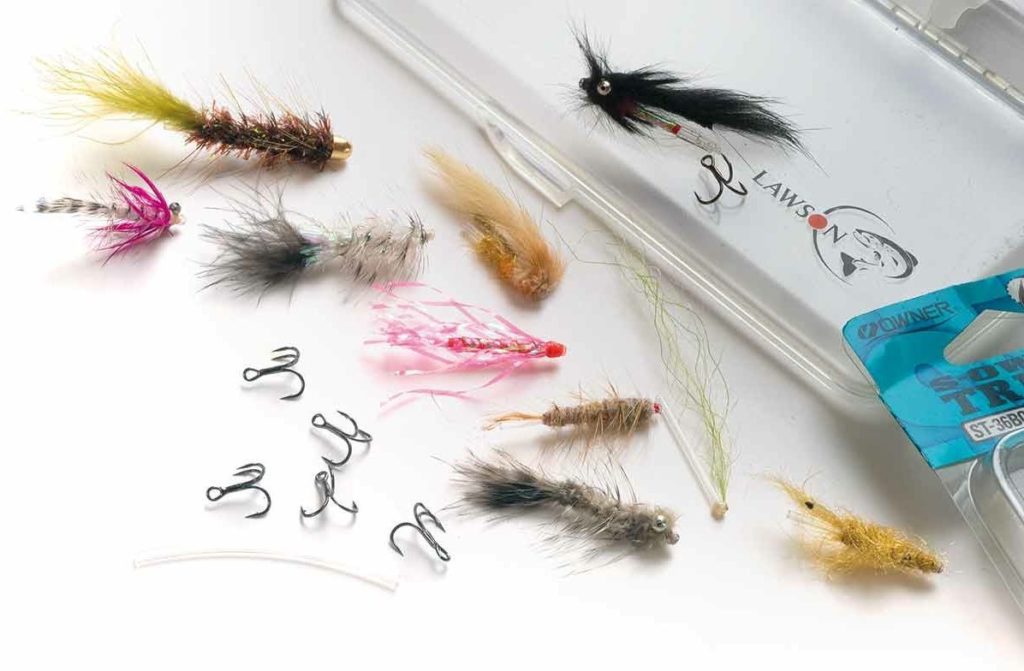
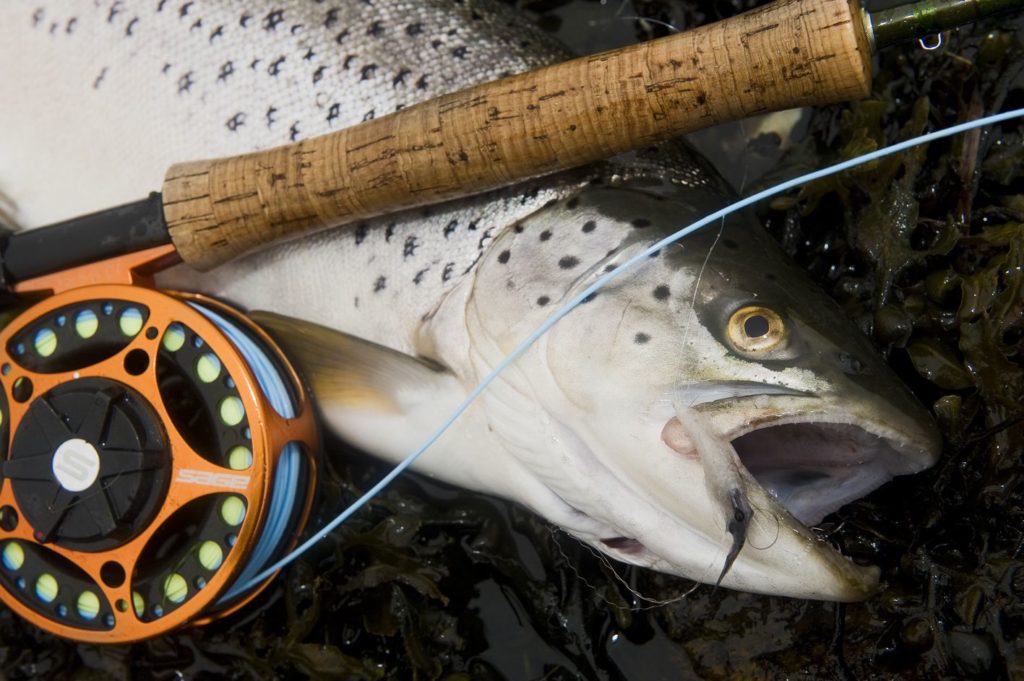
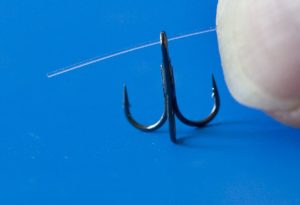
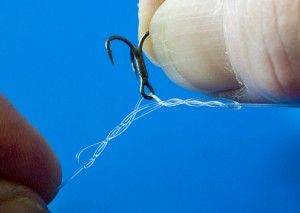
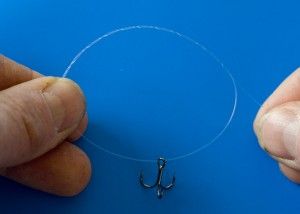
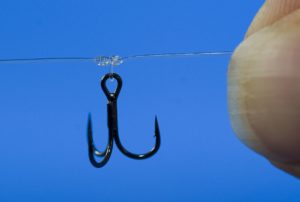
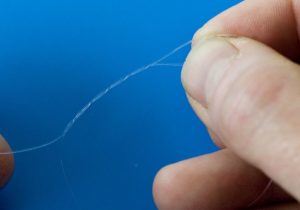
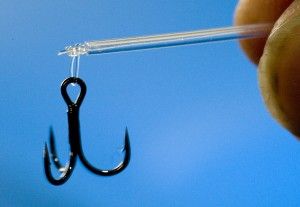
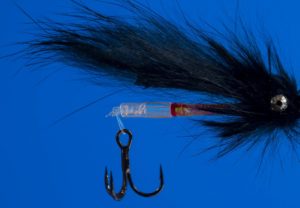
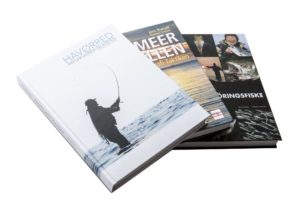 How to use the sea-trout tube fly
How to use the sea-trout tube fly